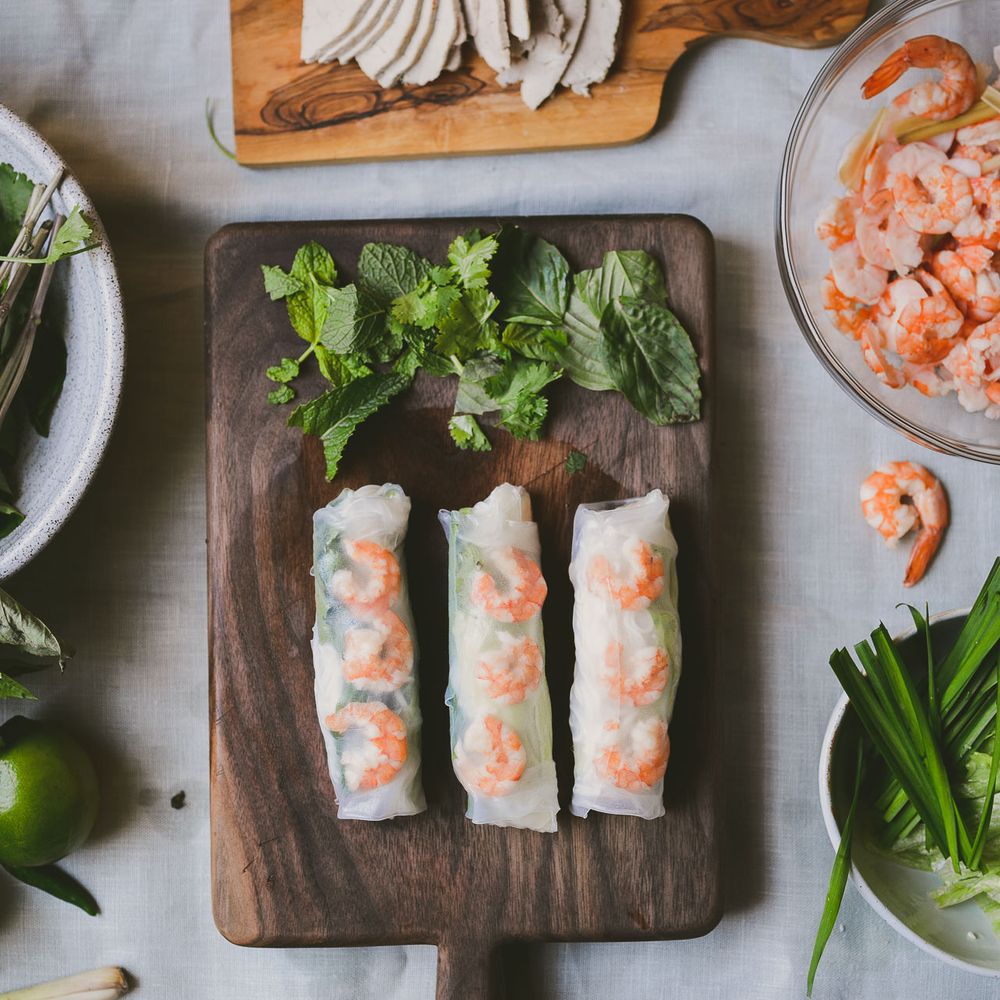Vietnamese pork and shrimp spring rolls (gỏi cuốn)
Pork second courses

These fresh rolls have been around for years, and in Vietnam they are fresher than you can imagine—even the rice paper is made from scratch. In the U.S., they're one of the most popular Vietnamese dishes you can find (other than pho), and with good reason. In the hotter seasons especially, there’s something irresistible about their freshness.
<br />
<br />The beautiful thing about Vietnamese spring rolls is that everyone can make these according to their own preference—the customizations are endless and tantalizing: Include pork, shrimp, or prawns and different types of vegetable and herbs; leave the rolls open on the ends or seal them shut; and serve them with various dipping sauces.
<br />
<br />In this particular version, I use many of the typical fillings, such as Thai basil, mint, cilantro, pork, and shrimp, to name a few. I poached the shrimp with lemongrass to add some extra flavor, but that is completely optional. (I tasted lemongrass-poached shrimp at a restaurant a while back and the subtle aroma stuck in my mind; I thought it'd add an interesting savory note to balance the herbs in this roll.)
<br />
<br />There are two things that will ensure a successful spring roll: mis en place and properly moist rice paper. Once you’ve prepped all of your filling ingredients, it’s just a matter of assembling the spring rolls. I’d say the part that takes the longest isn’t the actual assembly but prepping the ingredients. The rice paper is dipped in warm water, but it is important to only dip until the paper starts to become pliable but is not yet super soft. I let the rice paper soak for about 10 to 15 seconds, until it still has some structure but can be bent, before laying it on my rolling platform. The water will continue to soak through the rice paper as you assemble the roll and it should become soft at the right consistency by the time you’ve finished rolling.
<br />
<br />If you’re serving these immediately, you can cover the finished rolls with a slightly damp kitchen towel. If you want to store them for a longer period, stack layers of rolls, separated with plastic wrap, on a plate, cover the whole plate with plastic wrap, and keep refrigerated.

Comments